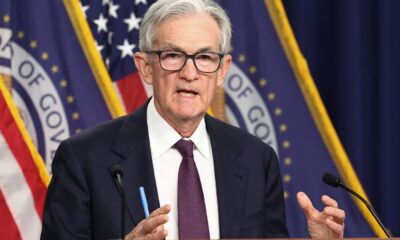Yana Iskayeva | Moment | Getty Images
The uber wealthy live a world apart and their investing strategies also look vastly different from the average investor’s portfolio.
“While there is no official threshold, centimillionaires or individuals with a total net worth of over $100 million, is a good benchmark as entry into the 0.001% club,” said Kevin Teng, CEO of WRISE Wealth Management Singapore, a wealth enterprise for ultra-high net worth individuals.
Globally, the population of centimillionaires stands at around 28,420 individuals, and are largely concentrated in New York City, the Bay Area, Los Angeles, London and Beijing, according to data from WRISE.
They bestow knighthood on you in the United States when you buy an NFL team.
Salvatore Buscemi
CEO of Dandrew Partners
“These cities boast robust financial infrastructure, vibrant entrepreneurial ecosystems, and lucrative real estate markets, making them attractive destinations for the ultra-wealthy?,” Teng told CNBC.
And this demographic that “epitomizes extreme wealth” is selective when it comes to investments, Teng said.
“They don’t invest in get rich, quick things, illiquid things today. For example, that means they don’t really do publicly traded equities,” said Salvatore Buscemi, CEO of Dandrew Partners, a private family investment office.
“They actually don’t even invest in crypto, believe it or not,” Buscemi told CNBC via Zoom. “What they’re looking for is to preserve their legacy and their wealth.”
1. Real estate
As a result, centimillionaire portfolios often feature “very strong, stable pieces of real estate,” Buscemi said. These wealthy individuals gravitate toward “trophy asset” Class A properties, or investment-grade assets that typically were built within the last 15 years.
Michael Sonnenfeldt, founder and chairman of Tiger 21 — a network of ultra-high net worth entrepreneurs and investors — told CNBC that real estate investments typically represent 27% of these individuals’ portfolios.
2. Family offices as investment vehicles
Individuals of such wealth generally have their money managed by single family offices, which handle everything including their inheritance, household bills, credit cards, immediate family expenses, etc., said Andrew Amoils, an analyst at global wealth intelligence firm New World Wealth.
“These family offices often have foundation arms for charities and venture capital arms that invest in high growth startups,” said Amoils.
The number of family offices in the world has tripled since 2019, topping 4,500 worldwide last year with an estimated $6 trillion in assets under management combined.
3. Alternative investments?
Ultra high net worth individuals also explore potentially buying stakes in professional sports teams, said Dandrew’s Buscemi.
“That’s a very, very insulated group to get into and requires a lot more than just money,” he said.
The exclusivity is a major appeal as these wealthy individuals want to mingle with people of similar status, Buscemi explained. Owning a stake in a sports team is a way for these individuals to legitimize their status, he said.
Owner Jerry Jones of the Dallas Cowboys welcomes fans to training camp at River Ridge Complex on July 24, 2021 in Oxnard, California.
Jayne Kamin-Oncea | Getty Images Sport | Getty Images
“They bestow knighthood on you in the United States when you buy an NFL team,” he said, like how American businessman and billionaire Jerry Jones bought the Dallas Cowboys in 1989.
WRISE’s Teng also noted that 0.001% individuals pay more attention to fixed income, private credit and alternative investments. He said private credit is gaining traction as investors seek sources of yield outside of conventional markets.
“This trend reflects a growing appetite for non-traditional assets that offer unique risk-return profiles,” said Teng, noting that alternative investments include venture capital, private equity and real assets.

 Accounting1 week ago
Accounting1 week ago
 Finance1 week ago
Finance1 week ago
 Economics6 days ago
Economics6 days ago
 Finance1 week ago
Finance1 week ago
 Economics1 week ago
Economics1 week ago
 Economics1 week ago
Economics1 week ago
 Personal Finance5 days ago
Personal Finance5 days ago
 Economics4 days ago
Economics4 days ago










